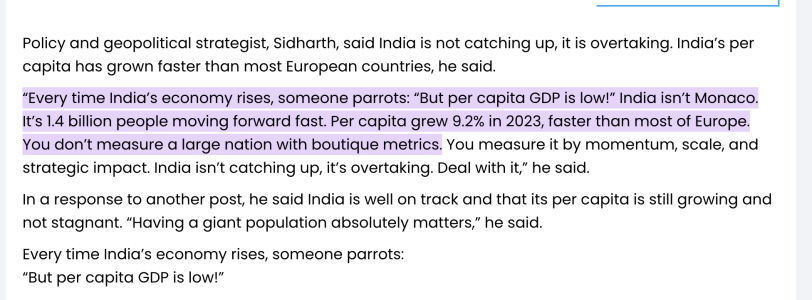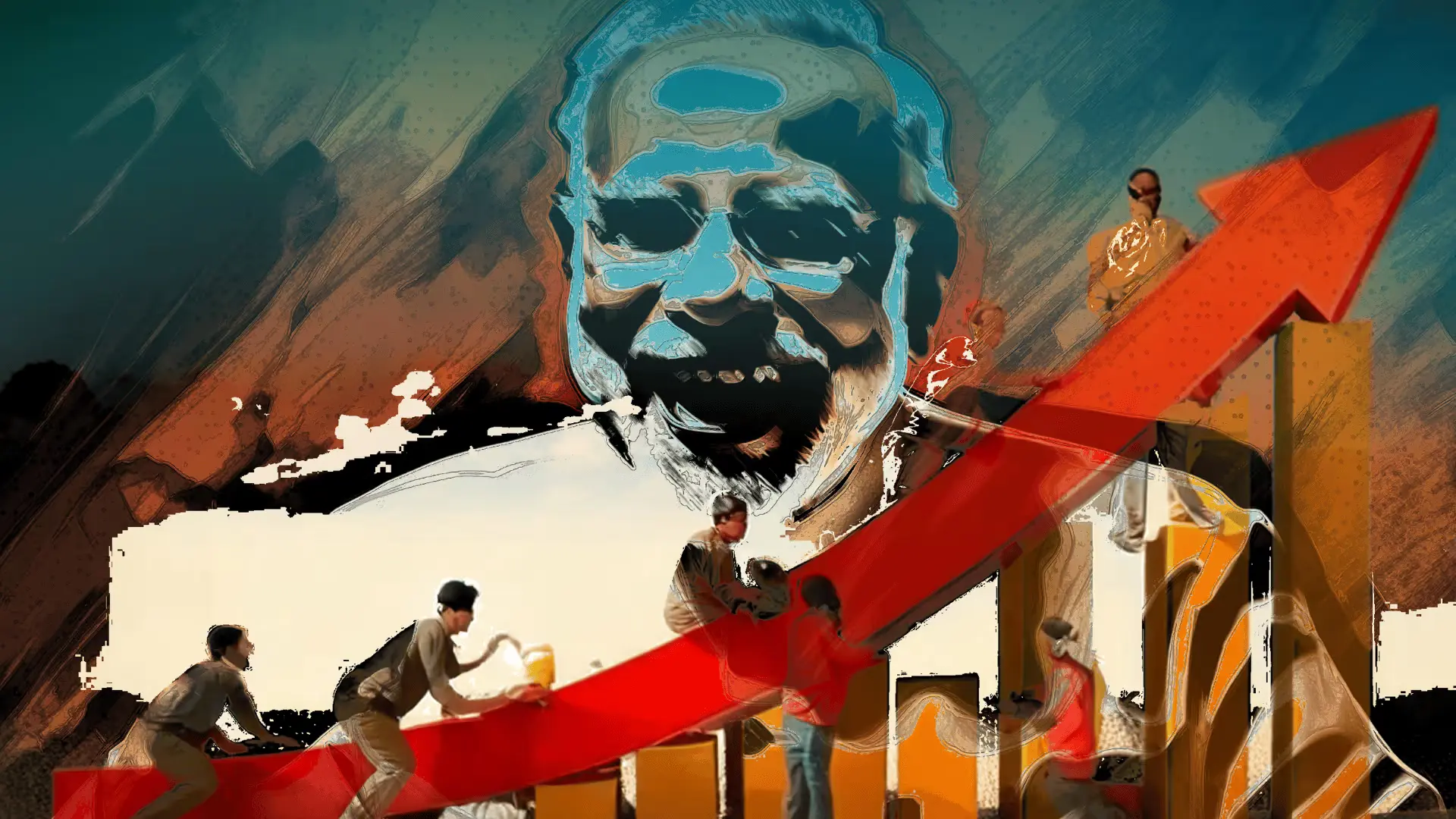India has officially overtaken Japan to become the world’s fourth-largest economy, marking a significant milestone in its economic ascent.
According to the International Monetary Fund’s (IMF) April 2025 World Economic Outlook, India’s nominal Gross Domestic Product (GDP) is projected to reach $4.187 trillion in 2025, marginally surpassing Japan’s estimated $4.186 trillion.
This development was confirmed by B.V.R. Subrahmanyam, CEO of NITI Aayog, during a press briefing following the 10th Governing Council meeting of the policy think tank. He attributed this achievement to favourable geopolitical dynamics and robust economic conditions currently benefiting India.
India is fastest-growing economy in the world: Finance Minister Nirmala Sitharaman
“We are the fourth largest economy as I speak. We are a $4 trillion economy, and this is not my data; this is IMF data. India today is larger than Japan. It’s only the United States, China, and Germany which are larger, and if we stick to what is being planned, what is being thought through, it’s a matter of another 2.0-2.5 to 3 years; we would become the third largest economy,” Subrahmanyam said.
The international financial institution projects India will remain the fastest-growing major economy over the next two years. India’s economy is expected to grow by 6.2 per cent in 2025 and 6.3 per cent in 2026, maintaining a solid lead over global and regional peers, the April 2025 edition of the IMF’s World Economic Outlook had said.
India is among the fastest-growing major economies and is projected to remain so over the next few years, as many global agencies have anticipated. Even as India has overtaken Japan in terms of the size of the economy, the per capita income in India remains low.
In contrast, the IMF projects global economic growth to be much lower, at 2.8 per cent in 2025 and 3.0 per cent in 2026, highlighting India’s outperformance.
The CEO of NITI Aayog further stated that India is at a turning point and at a take-off stage where it can “grow very, very rapidly.”
In 2013, India was placed in the league of ‘Fragile 5’ economies. The term ‘Fragile 5’ was coined by a Morgan Stanley analyst and refers to a set of five emerging countries, including India, whose economies were not doing well. The other four countries were Brazil, Indonesia, South Africa, and Turkey.
Since then, India has made a turnaround, climbing the ladder of economic growth.
To realise the vision of ‘Viksit Bharat’ or a developed nation dream by 2047, India will need to achieve a growth rate of around 8 per cent at constant prices, on average, for about a decade or two, the Economic Survey document for 2024-25 tabled on January 31 said.
The news has been met with widespread national pride. Business leader Anand Mahindra expressed both celebration and caution, emphasising the need for continued growth.
According to the International Monetary Fund’s (IMF) April 2025 World Economic Outlook, India’s nominal Gross Domestic Product (GDP) is projected to reach $4.187 trillion in 2025, marginally surpassing Japan’s estimated $4.186 trillion.
This development was confirmed by B.V.R. Subrahmanyam, CEO of NITI Aayog, during a press briefing following the 10th Governing Council meeting of the policy think tank. He attributed this achievement to favourable geopolitical dynamics and robust economic conditions currently benefiting India.
India is fastest-growing economy in the world: Finance Minister Nirmala Sitharaman
“We are the fourth largest economy as I speak. We are a $4 trillion economy, and this is not my data; this is IMF data. India today is larger than Japan. It’s only the United States, China, and Germany which are larger, and if we stick to what is being planned, what is being thought through, it’s a matter of another 2.0-2.5 to 3 years; we would become the third largest economy,” Subrahmanyam said.
The international financial institution projects India will remain the fastest-growing major economy over the next two years. India’s economy is expected to grow by 6.2 per cent in 2025 and 6.3 per cent in 2026, maintaining a solid lead over global and regional peers, the April 2025 edition of the IMF’s World Economic Outlook had said.
India is among the fastest-growing major economies and is projected to remain so over the next few years, as many global agencies have anticipated. Even as India has overtaken Japan in terms of the size of the economy, the per capita income in India remains low.
In contrast, the IMF projects global economic growth to be much lower, at 2.8 per cent in 2025 and 3.0 per cent in 2026, highlighting India’s outperformance.
The CEO of NITI Aayog further stated that India is at a turning point and at a take-off stage where it can “grow very, very rapidly.”
In 2013, India was placed in the league of ‘Fragile 5’ economies. The term ‘Fragile 5’ was coined by a Morgan Stanley analyst and refers to a set of five emerging countries, including India, whose economies were not doing well. The other four countries were Brazil, Indonesia, South Africa, and Turkey.
Since then, India has made a turnaround, climbing the ladder of economic growth.
To realise the vision of ‘Viksit Bharat’ or a developed nation dream by 2047, India will need to achieve a growth rate of around 8 per cent at constant prices, on average, for about a decade or two, the Economic Survey document for 2024-25 tabled on January 31 said.
The news has been met with widespread national pride. Business leader Anand Mahindra expressed both celebration and caution, emphasising the need for continued growth.
Last edited by a moderator:













